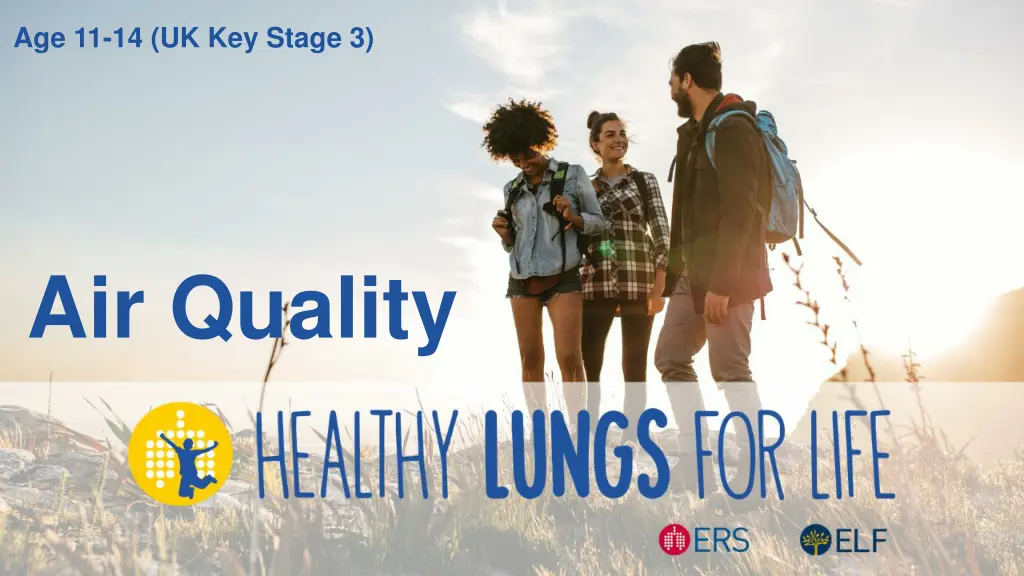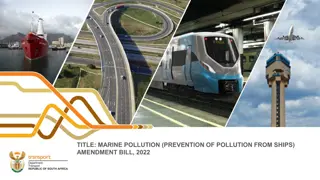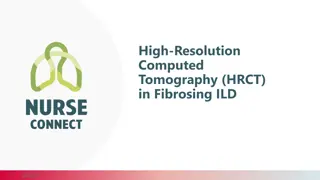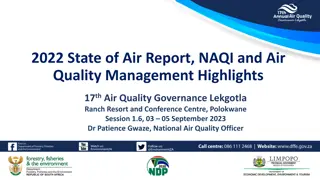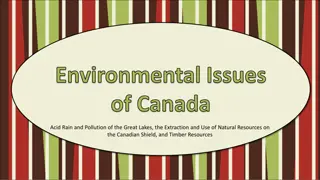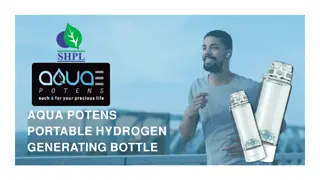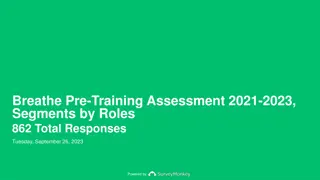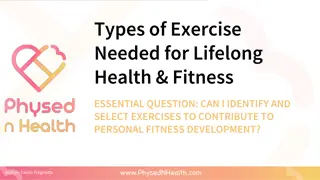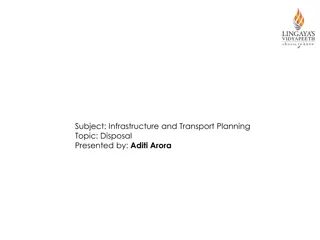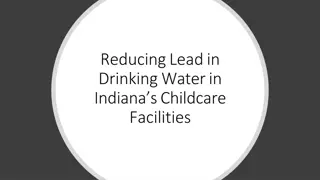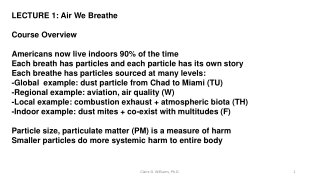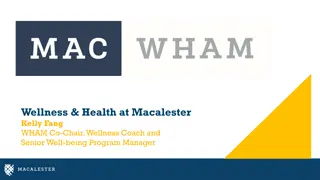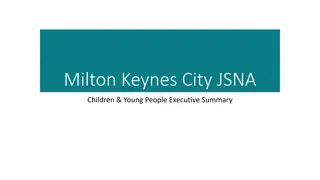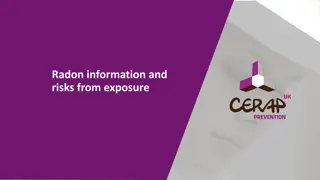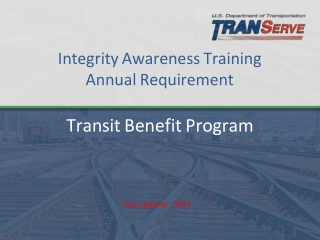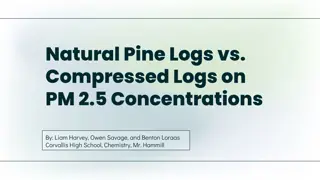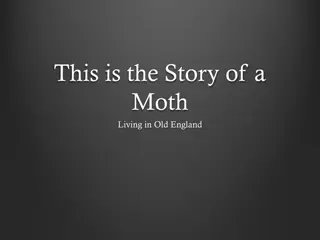Breathe Easy: Understanding Air Pollution and Lung Health
Learn how air pollution affects lungs, worsens asthma, and hinders lung development. Discover the harmful gases and particles in polluted air, causing immediate and long-term issues. Explore asthma and COPD conditions exacerbated by poor air quality.
Download Presentation
Please find below an Image/Link to download the presentation.
The content on the website is provided AS IS for your information and personal use only. It may not be sold, licensed, or shared on other websites without obtaining consent from the author. Download presentation by click this link. If you encounter any issues during the download, it is possible that the publisher has removed the file from their server.
Presentation Transcript
Age 11-14 (UK Key Stage 3) Air Quality
Why do we need clean air?
Air pollution can Damage your lungs and stop them growing properly Make asthma and other lung problems worse
How the lungs work Watch an animation of how the lungs work https://www.youtube.com/watch?v =f_xnopMf3p8
How air pollution affects the lungs Pollutants can irritate the lungs or get stuck Breath in pollutants as well as oxygen
How air pollution affects the lungs Pollution can cause immediate problems like coughing and wheezing Air pollution inhibits the rapid lung development normally seen between ages 10 and 18. It can also cause long- term damage like cancer
Asthma and COPD Asthma and COPD are lung conditions that can make it hard to breathe Air pollution can make asthma and COPD worse Asthma is often inherited (genetic) COPD is mainly caused by smoking Do you or anyone you know have asthma or COPD?
Why asthma makes it hard to breathe Try breathing through a straw to see what it feels like to have asthma Healthy airways are relaxed and open so air can flow easily With asthma the airways get swollen, making it hard to breathe Air pollution can cause this
What is air pollution? Tiny Particles Harmful Gases
Harmful Gases N O O O O O Nitrogen Dioxide (NO2) S Ozone (O3) O O Sulphur Dioxide (SO2)
Tiny Particles Anything solid or liquid suspended in air Combustion by-products Ash Fumes Soot Tar Volatile organic compounds Man-made materials Metal dust Flour Aerosols Volatile liquids Natural particles Dust Pollen Spores Sea salt Watch Video good and bad particles https://www.youtube.com/watch?v=_8RI6KZ9R_g
Tiny Particles The size is more important than the source Human hair 50-70 micrometers PM2.5 PM10 Particles less than 10 micrometers across Particles less than 10 micrometers across
PM10 particles can reach the upper airways, causing inflammation and damage PM2.5 particles can reach the alveoli and even diffuse into the bloodstream, causing more serious problems
Where does air pollution come from?
Where does air pollution come from? Most air pollution comes from burning stuff including Coal Gas Petrol and Diesel Jet Fuel Wood Paper
So where do the particles come from? Ceramic tile What is this? Candle or Bunsen burner Can t do the demo? Watch the video instead
Complete and incomplete combustion Complete combustion hydrocarbon + oxygen carbon dioxide + water Particles Incomplete combustion hydrocarbon + oxygen carbon dioxide + water + carbon monoxide + carbon
Can you identify sources of air pollution?
Fires Buses/Trains Petrol/diesel cars Smoking Aerosols Cycling Solar panels Farming Volcanos Electric cars Fireworks Walking Cleaning products Power stations Trees Aeroplanes Wind turbines Motorcycles
Are all the sources of air pollution equally bad? What can we do to reduce air pollution?
Fill in the worksheet Causes (where air pollution comes from) Effects (how air pollution affects people and places) Solutions (what we can do to make things better)
True or false? TRUE! Childrens lungs are more vulnerable as they are smaller and still developing. They also breathe faster so may take in more pollutants. Air pollution affects children more than adults
True or false? FALSE! Some air pollutants, like car exhausts, have a strong smell but others are completely odourless You can always smell air pollution
True or false? FALSE! Air pollution can also affect the heart/ circulatory system and the brain/nervous system Air pollution only affects our lungs
True or false? TRUE! Some of the most dangerous air pollutants are incredibly tiny particles which can go deep into the lungs and get into the bloodstream Sometimes air pollution is invisible
True or false? FALSE! Natural sources of air pollution include wildfires, volcanoes, and dust storms. Mould spores and pollen can also aggravate lung problems. All air pollution is made by humans
True or false? TRUE! The sunlight can trigger chemical changes which make the pollutants even more dangerous. Air pollution is often worse on hot sunny days
True or false? FALSE! Air pollution can much more concentrated inside buildings and cars. The air is more still so pollution builds up. Air pollution is always worst outdoors
Looking at air pollution data
Looking at air pollution data Overall air quality (AQI) Place NO2 O3 PM2.5 PM10 Do you notice anything interesting about what you have found out?
I want to breathe clean air. I will do my bit to reduce air pollution. I promise that I will . Make your clean air pledge #BreatheCleanAir
Ideas for action Walk on quieter roads or through parks Avoid using spray deodorant Turn car engine off when waiting Go Car share with friends Don t smoke or vape outside more Wear a face mask when doing crafts Walk, scoot or cycle to school Ask family not to use an open fire Open the windows more often Use public transport more
